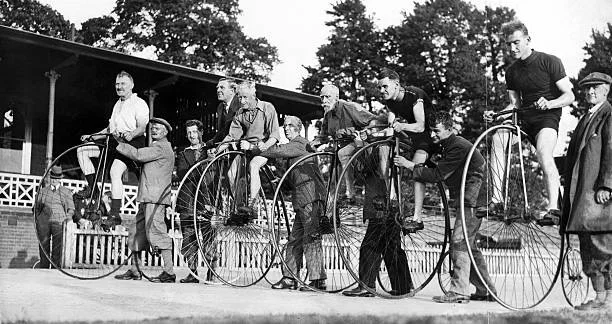Essay: On the French Endurance Event Addition
(2018) It has been a little over twenty-four hours since the Tour de France has concluded. Prior to the final stage, Ford introduced the winning team with another special presentation. Long a sponsor of the Tour de France victors, Ford has been known to sneak in a few special editions into the caravan of world famous bike races.
For years Ford owned several global car companies. It should come as no surprise Ford owned Land Rover, since theirs and Ford’s SUVs looked similar for a while. Ford owned Aston Martin, theirs and Ford’s frontal designs – still – look eerily similar. Ford once owned Jaguar, which is why two of them made their way across the cobbles of northern France as Grand Tour team cars. That is, until one of the Jags rear-ended another team car and was pushed to the side by soigneurs and roadside fans alike. The steam from under the hood added to the definite chuckling by commentators. Last year Ford presented a yellow Mustang as a celebratory escort to Paris.
This year, though, appropriately, Ford delivered a finish line car in France to make many fans - both cycling and motorsport - nod in approval. The Tour de France isn’t the only endurance race in the country. Just a few weeks ago, the famous 24 Hours of Le Mans concluded. It is a race steeped in automotive history designed to test both man and machine through endurance. You can thank many automotive improvements on the education gleaned through the once-around-the-clock classroom that is Le Mans. Though more regulated on the drivers than in years gone by, the event has morphed with the times. For a short while, American cars dominated the scene.
After a botched purchase attempt of Ferrari, Henry Ford II was determined to exact revenge on the Italian car company and its owner Enzo Ferrari. After many frustrating attempts at success, Ford finally beat Ferrari in 1966 with the now timeless GT40. Henry Ford II (or, Hank the Deuce) was in attendance for that first win. The GT40 and its several iterations would win the 24 Hour of Le Mans in 1966, ’67, ’68, and ’69.
Though Ford sent one GT to Paris, they sent two to last week's IMSA race at Lime Rock Park, Connecticut. Their numbers - 66, 67, 68, and 69, respectively - represent the years Ford won Le Mans with the original GT40.
To celebrate the fiftieth anniversary of the 1966 win, Ford reentered the Le Mans racing pool in 2016 with the updated Ford GT and a goal of repeating victory at Le Mans. With next-to-no preparation time, Ford won Le Mans under Chip Ganassi Racing. It was not without drama as both Ganassi and Ferrari protested in-race actions. The Ford GT win was temporarily handed over to Ferrari before Ferrari, too, was penalized and relegated back to second place. What would a five-decade achievement be without echoes of the past?
With the Tour de France struggling with echoes of the past, Ford delivered a yellow GT to be paraded around stage 21 of this year’s race. The car was appropriately adorned with a bike along the middle of the roof. I’d say it would be highly unlikely to see a Ford GT with a bike on its roof, but have you checked out Pedal Mafia's McLaren lately?
Given our page’s livery and regular odes to the Ford GT40 (the 40 denoted the fact the car stood only 40 inches high) and the current Ford GT, we would kick ourselves if we didn’t take a moment and enjoy seeing the beautiful rare car with so much history being discussed at the 2018 Tour de France. I have always thought the car a curious appearance. It is a beast that looks sheepish in the paddock, but when it is fired up it carries out its mission to be the fastest around the track and clock. I think the old GT40s were terrifying machines. The weakest link in the whole process was the driver itself. The GT40 would have no problem destroying itself in pursuit of speed; the human was there to rein it in.
Maybe that’s why Ford sent the GT to the Grand Buckle’s final stage. Tour de France finishers and Ford GTs are not really that far apart in design.





